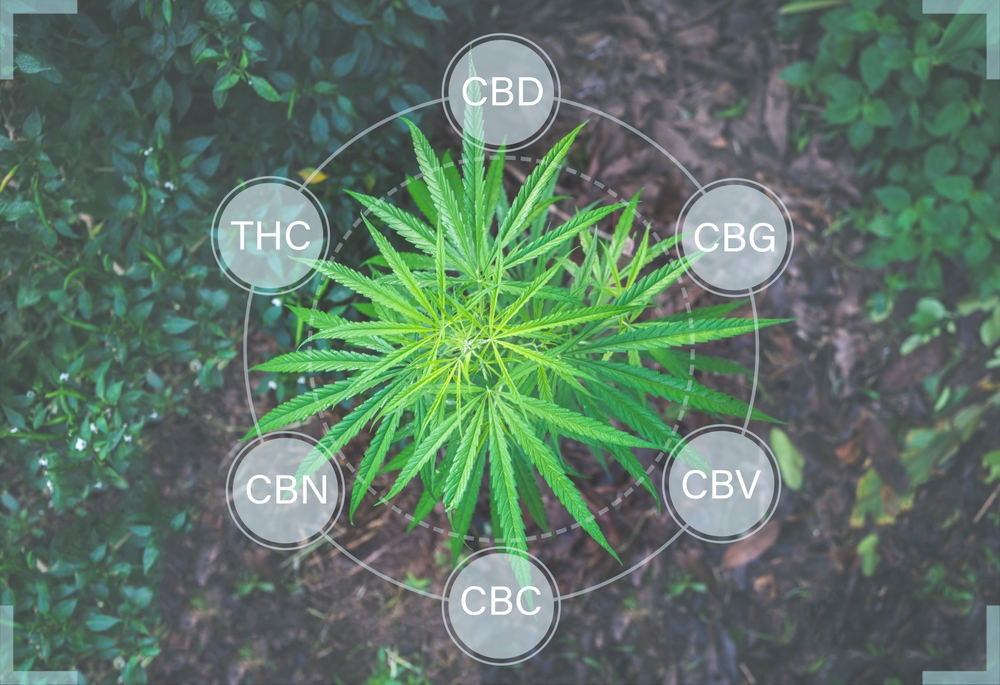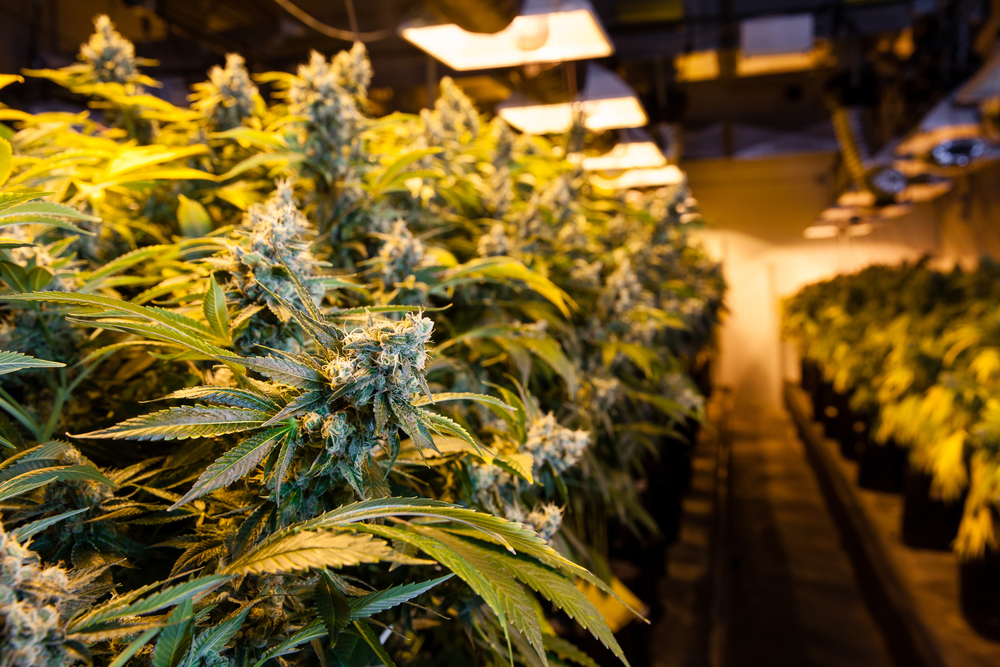Table of Contents
Introduction to CBV (Cannabivarin)
Cannabivarin (CBV) is a naturally occurring cannabinoid found in cannabis plants. It belongs to the larger family of cannabinoids, which are chemical compounds unique to the cannabis plant. CBV is gaining increasing attention due to its potential therapeutic properties and its interaction with the body’s endocannabinoid system (ECS).
While not as well-known as THC (tetrahydrocannabinol) or CBD (cannabidiol), CBV exhibits its own distinct characteristics and potential benefits. As research on cannabinoids expands, CBV is emerging as a fascinating component that warrants further exploration.

Definition and Background
CBV is one of the lesser-known cannabinoids found in cannabis plants. It was first discovered and isolated in the 1960s, alongside other prominent cannabinoids like THC and CBD. While THC is primarily responsible for the psychoactive effects of cannabis, and CBD has gained attention for its potential therapeutic properties, CBV has remained relatively understudied.
However, recent research has shed light on the unique characteristics of CBV and its potential benefits. CBV is structurally similar to other cannabinoids, but it differs in terms of its specific chemical composition and interactions with the ECS, as studies have already confirmed that CBD does.
As the scientific understanding of CBV continues to evolve, it holds promise for various medical and therapeutic applications, making it an intriguing subject of investigation within the field of cannabinoid research.
Significance and growing interest
CBV stands out among the cannabinoids due to its distinct chemical composition and potential therapeutic properties. It offers a different profile of effects compared to well-known cannabinoids like THC and CBD, sparking curiosity among researchers and enthusiasts.
Preliminary research suggests that CBV may possess therapeutic benefits, including anti-inflammatory and neuroprotective properties. These potential applications have piqued the interest of scientists and medical professionals looking for alternative treatment options.
CBV is a non-psychoactive cannabinoid, meaning it does not produce the intoxicating effects associated with THC. This makes it particularly attractive for individuals seeking the potential health benefits of cannabinoids without the psychoactive side effects.
CBV may work synergistically with other cannabinoids and compounds found in the cannabis plant, enhancing their therapeutic effects. This has led to increased interest in exploring the entourage effect, which suggests that the combined presence of multiple cannabinoids can have greater therapeutic potential than isolated compounds.
The growing interest in CBV is reflected in the increasing number of research studies focusing on its properties and potential applications. Scientists are conducting preclinical and clinical studies to unravel its mechanisms of action, investigate its therapeutic potential, and explore its interactions with the ECS and other physiological systems.
As the awareness and understanding of CBV expand, there is a potential for commercial opportunities in various industries. This includes the development of CBV-based products such as supplements, topicals, and pharmaceuticals, catering to the growing demand for alternative therapeutic options.
The significance of CBV is also reflected in the regulatory landscape. As researchers and industry stakeholders delve deeper into its potential, regulatory agencies may need to adapt to accommodate its use in medical and commercial contexts. The significance and growing interest in CBV stem from its unique characteristics, potential therapeutic applications, and the increasing body of research exploring its properties.
The exploration of CBV opens up new possibilities for harnessing the benefits of cannabinoids and expanding our understanding of their potential contributions to human health and well-being.
Properties and Characteristics of CBV
Chemical structure and composition
CBV, or Cannabivarin, is a cannabinoid found in cannabis plants. It is structurally similar to other cannabinoids, such as THC and CBD, but has its own distinct chemical composition. CBV is derived from the cannabigerolic acid (CBGA) precursor and undergoes enzymatic processes to form its specific structure.
Its chemical formula is C21H30O2, and it shares a similar backbone with other cannabinoids, consisting of a pentyl side chain attached to a phenolic ring. The unique arrangement of atoms in CBV contributes to its specific properties and potential effects.
Non-psychoactive nature
One notable characteristic of CBV is its non-psychoactive nature. Unlike THC, which is known for its intoxicating effects, CBV does not produce the same psychoactive response.
This makes CBV appealing to individuals seeking the potential therapeutic benefits of cannabinoids without the associated euphoria or altered mental state.

Potential interactions with the endocannabinoid system (ECS)
CBV interacts with the body’s endocannabinoid system (ECS), which is a complex network of receptors, endocannabinoids, and enzymes involved in regulating various physiological processes. CBV has shown potential in modulating the ECS by interacting with cannabinoid receptors, primarily CB1 and CB2 receptors. These interactions may influence the regulation of functions such as pain perception, inflammation, mood, and immune response.
Additionally, CBV may impact the ECS by inhibiting the breakdown of endocannabinoids, such as anandamide, through interactions with enzymes like fatty acid amide hydrolase (FAAH). This inhibition can result in increased levels of endocannabinoids, potentially contributing to the modulation of physiological processes regulated by the ECS.
Unique Benefits and Potential Effects of CBV
CBV, or Cannabivarin, offers a range of unique benefits and potential effects that set it apart from other cannabinoids. One of the notable advantages of CBV is its non-psychoactive nature, making it an appealing option for individuals seeking the potential therapeutic benefits of cannabinoids without experiencing the intoxicating effects associated with THC.
CBV has shown promise in exhibiting anti-inflammatory properties, which can be beneficial for managing conditions characterized by inflammation, such as arthritis or inflammatory bowel disease. Additionally, CBV has demonstrated neuroprotective effects, suggesting its potential in preserving brain health and protecting against neurodegenerative diseases.
Studies also suggest a potential role for CBV in mood regulation and emotional well-being, with indications of potential antidepressant and anxiolytic effects. These unique benefits make CBV a captivating cannabinoid with a diverse range of potential effects, opening up possibilities for its utilization in various therapeutic applications.
Anti-inflammatory properties and potential for pain management
-Research suggests that CBV exhibits anti-inflammatory properties, which can help reduce inflammation in the body. Inflammation plays a role in various conditions, including chronic pain and inflammatory diseases.
-CBV may potentially modulate the immune response and inhibit the release of pro-inflammatory molecules, contributing to its anti-inflammatory effects.
-The anti-inflammatory properties of CBV make it a potential candidate for managing pain, as inflammation often accompanies pain symptoms. By targeting the underlying inflammation, CBV may help alleviate pain in conditions such as arthritis or neuropathic pain.
Neuroprotective effects and implications for brain health
-Studies indicate that CBV may have neuroprotective properties, meaning it may help protect and preserve the health of neurons in the brain.
-CBV’s neuroprotective effects are attributed to its potent antioxidant and anti-inflammatory properties, which can mitigate oxidative stress and inflammation that contribute to neuronal damage.
-These neuroprotective properties hold promise for conditions involving neurodegeneration, such as Alzheimer’s disease, Parkinson’s disease, and multiple sclerosis. CBV may help slow down disease progression and protect against neuronal damage.
Potential role in mood regulation and emotional well-being
-Emerging evidence suggests that CBV may have a role in mood regulation and emotional well-being.
-CBV may interact with receptors in the brain associated with moods, such as serotonin receptors, potentially influencing neurotransmitter levels and pathways involved in mood regulation.
-Preclinical studies have shown promising results in animal models, indicating that CBV may have antidepressant and anxiolytic effects, potentially offering a natural alternative for managing mood disorders and anxiety-related conditions.

Comparisons with Other Cannabinoids
Contrasting CBV with THC, CBD, and other well-known cannabinoids
Unlike THC, CBV is non-psychoactive, meaning it does not produce the intoxicating effects associated with THC. This makes CBV a favorable option for those seeking the potential benefits of cannabinoids without the psychoactive side effects.
While both CBV and CBD are non-psychoactive, they have different mechanisms of action. CBV primarily interacts with the endocannabinoid system (ECS), while CBD interacts with various other receptors in the body, such as serotonin receptors. This distinction may lead to different effects and potential therapeutic applications.
Each cannabinoid, including CBV, has its own unique chemical structure and interactions with the ECS, resulting in distinct properties and potential benefits. For example, CBV differs from CBC (cannabichromene) in its chemical structure, potentially leading to variations in their effects and therapeutic potential.
Research and Future Directions
Current state of research on CBV
Research on CBV is still in its early stages, and compared to other cannabinoids like THC and CBD, CBV has received relatively less attention. However, there is a growing interest in CBV, and recent studies have started to shed light on its properties and potential therapeutic applications.
Current research efforts are focused on understanding CBV’s mechanisms of action, exploring its interactions with the endocannabinoid system (ECS), and investigating its potential benefits in various medical conditions.
Potential medical applications and ongoing studies
CBV shows promise in several potential medical applications. Ongoing studies are exploring its effectiveness in pain management, particularly in conditions characterized by inflammation and chronic pain.
Research is also investigating CBV’s neuroprotective effects, looking at its potential for treating neurodegenerative diseases such as Alzheimer’s and Parkinson’s. Furthermore, studies are exploring CBV’s potential in mood regulation, including its possible role in managing depression, anxiety, and other mood disorders.
Commercial possibilities and opportunities for further exploration
The increasing interest in CBV opens up commercial possibilities and opportunities for further exploration. CBV-based products, such as supplements, topicals, and pharmaceuticals, may emerge in the market as researchers uncover its potential therapeutic applications.
Additionally, as regulations surrounding cannabis and cannabinoids evolve, there may be opportunities for companies to invest in the cultivation, extraction, and production of CBV for commercial purposes. Further research and clinical trials are needed to fully understand CBV’s efficacy, safety, and optimal usage in different medical applications. Continued exploration of CBV’s potential benefits and interactions may pave the way for innovative treatments and commercial ventures in the future.
Overall, the current state of research on CBV is progressing, and ongoing studies are uncovering its potential medical applications. The commercial possibilities surrounding CBV are also gaining attention, providing opportunities for further exploration and the development of new products. Continued research efforts and clinical trials will be crucial in establishing CBV’s therapeutic efficacy and expanding its potential uses in various industries.

Conclusion
CBV, or Cannabivarin, possesses unique properties that set it apart from other cannabinoids. Unlike THC, CBV is non-psychoactive, making it an appealing option for those seeking the potential benefits of cannabinoids without the intoxicating effects. It exhibits anti-inflammatory properties, potentially aiding in the management of conditions characterized by inflammation and offering potential benefits for pain management. CBV also shows neuroprotective effects, suggesting its potential in protecting brain health and combating neurodegenerative diseases. Additionally, studies indicate that CBV may play a role in mood regulation and emotional well-being. These unique properties position CBV as an intriguing cannabinoid with a range of potential therapeutic benefits.
While research on CBV is progressing, there is a need for further investigation to fully understand its implications. More studies are necessary to elucidate CBV’s mechanisms of action, interactions with the endocannabinoid system, and potential therapeutic applications. Clinical trials are required to establish its efficacy, safety, and optimal dosages for specific medical conditions. In-depth research will enable a comprehensive understanding of CBV’s potential benefits, allowing for evidence-based recommendations and informed decision-making in the medical field.
The potential applications of CBV extend beyond the medical field, presenting exciting opportunities in various industries. As awareness grows, there is potential for CBV to be incorporated into diverse products, such as cosmetics, skincare, and wellness supplements. Its non-psychoactive nature and potential therapeutic benefits make it appealing to those seeking natural alternatives. Additionally, CBV holds promise for pharmaceutical development, offering a new avenue for drug research and innovation. With its distinct properties and growing interest, CBV has the potential to carve out a significant space in the cannabis industry and contribute to advancements in therapeutic applications.





